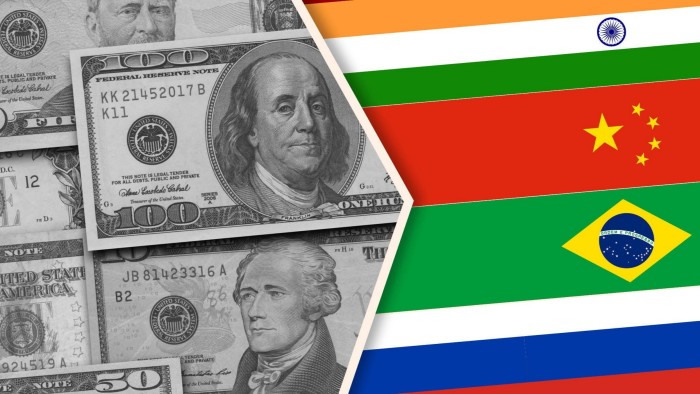Emerging markets ride out the financial squeeze

Roula Khalaf, Editor of the FT, selects her favourite stories in this weekly newsletter.
The author is senior economist at Oxford Economics
To say that emerging markets will struggle in times of global financial squeeze used to be a safe bet — their financial woes were almost a canary in the global economic coal mine.
In the past, such predictions were almost certain to pan out, but this time looks different. After more than a year of worsening, the financial conditions of emerging markets seem to be levelling off. The overall impression is of emerging markets faring the current global financial squeeze rather well. This is mostly a consequence of their newfound macro prudence but as always idiosyncratic factors play a role.
China is now among the few emerging markets easing monetary policy, but this is yet to provide a tailwind for the economy and not just because of the country’s lockdown policies. While the People’s Bank of China has lowered its policy and reserve requirements, equity market losses and the continued hammering of the real estate market mean that there’s still no clearly visible sign of improved financial conditions (even if the deterioration has halted).
Credit and money are picking up in China but not as dramatically as in the past episodes of financial stimulus. To get the real economy going at full speed again will require more targeted policies.
On a wider front, foreign investors are not “punishing” emerging markets as much as they have done in past episodes of increased risk aversion — bond spreads over developed markets are unusually elevated for only a few countries such as Turkey and eastern European nations. A creep up in rates is more pronounced in local-currency government debt, but even here it’s mostly eastern European countries that are seeing both rising inflation due to Europe’s energy crisis and growing risk from proximity to war in Ukraine, and a fall in financial market liquidity as foreign investors shy away from higher risk and a murkier political outlook.
The exchange rates story is more nuanced. Emerging markets have generally benefited from starting the policy tightening cycle early and decisively, but this has not been crucial in determining their currency destiny. True, on average those countries that have raised their policy rates more in the past two years have seen less depreciation and even some currency strengthening, but the correlation is less than perfect.
Some emerging market currencies’ strength is idiosyncratic (think Russia), some is commodities related (oil producers enjoying an oil revenue boon). But there is a broader Asian currency weakness that policy rate differentials alone cannot explain: both tighteners and holdouts are seeing currencies weaken.
It is, however, likely that the trend in weak Asian currencies will reverse rather than spark a new financial (or debt) crisis. Local currency and long-term debt are more prevalent today than in the 1990s and Asian economies now hold vast foreign reserves. And today’s global financial system with its vast reserves of dormant liquidity bears little resemblance to the era of the infamous Asian financial crisis.
Be that as it may, a stronger dollar has traditionally meant trouble for emerging markets, not just financial but real, too: the broad emerging markets trade-weighted dollar index tends to correlate negatively with emerging markets real activity. But this time around, the relationship is not holding up. That is rare but that is what is happening.
Despite continued dollar strength, emerging markets have managed a strong rebound from a weak patch earlier in the year. Some slowdown in growth is to be expected, as the global economy braces for a downturn if not a recession, but what’s striking is the misalignment of the dollar rather than the usual emerging market vulnerabilities. The upsurge of the Covid recovery was never as strong as in the advanced economies and a slowdown now is mild.
Emerging market equities, meanwhile, have now lost all the gains of the post-pandemic recovery, though performance is uneven. Likewise house prices. While China seems past the worst of its housing market correction, eastern European countries are going through a sharp contraction.
But thanks to early monetary policy tightening, most emerging markets facing high inflation have managed to produce a turnround and may now be close to their peak rate levels. The dollar, too, seems close to its apex, and liquidity is under control in the majority of emerging markets, with the exception of eastern Europe. Given that this is due to a European conflict rather than a wider emerging markets crisis, we could conclude that developing economies have delivered on a promise of prudent policy and macro stability.
Comments